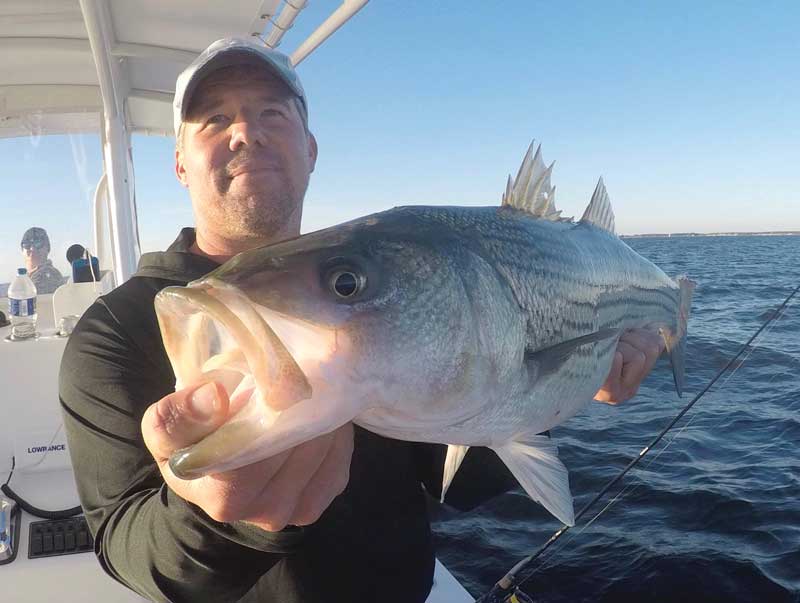Hoping to catch end of season big rockfish? Superstorm Sandy did something to change the migration pattern of rockfish from Delaware south. Before the storm we had decent fishing for big rock at the mouth of the Delaware Bay and down the coast to Maryland and Virginia. Since then the larger rock have headed farther out to sea well beyond the Exclusive Economic Zone (EEZ) into federal waters where rockfishing is banned.

There is, however, one spot that has consistently produced trophy rockfish before and after Superstorm Sandy. The channel edge outside of Cape Charles, VA, remains productive to this day.
Cape Charles is the last town on the Eastern Shore of Virginia as you drive south. It has always had a good reputation for fishing with black drum and big blues in the spring and rockfish in the fall. The appearance of rockfish that consistently eclipse the 50-pound mark is relatively new or has been a secret kept by the locals.
Getting to Cape Charles is easy. Just drive down Route 13 until you come to the Cape Charles stoplight, turn right on Route 184, and that will take you into town. Chris’ Bait and Tackle (757-331-3000) is on Route 13 just a bit south of town, and they will have all the stuff you need plus up to date information on the fishing.
The launch ramp in town is not really in town. It is located over the railroad bridge on the right down a small road (SR 642) you may drive right by. Don’t worry; you won’t be the first person to miss that road.
The ramp itself is not that big, and you will have to do a bit of wheel-twisting to get the boat properly aligned. Once in the water, stick to the channel markers all the way to the end of the channel, even though you will be heading south, and the area you want to fish is west.
Once clear of the channel, head towards Buoy C10. The water depth drops from 12 to 122 feet along the Plantation Flats, and the big rockfish will hang out somewhere along that edge.
Now that you are here, what to use for bait? I suppose since rockfish will eat just about anything they can catch, so just about any bait will work. This is true, but over the years one bait has come out head and shoulders above the rest. That bait doesn’t have any shoulders, but the good, old American eel is the top attractor in this fishery.
When the fishing is good, eels can be hard to find, so I suggest a call to Chris’ or Sea Hawk Tackle (410-957-0198) in Maryland just above the Virginia line to check or reserve your eels. If you can obtain eels locally, they travel well in a cooler if kept away from the ice or water.
As mentioned, the water depth varies from shallow to deep, so you will want to put out at least three eels. Set one about 10 feet down, the second half way to the bottom, and the third close to the bottom. These will have to be adjusted as the water depth changes. This means an angler on every rod dropping or cranking up the baits. Just putting the rods in holders and sitting back to enjoy the day is not likely to put a big rock on the end of your line.
The rig employed in this fishery is quite simple. The 60-pound braid line is run through a bobber, usually a bright orange ball, and down on an 80-pound mono leader to a big 8/0 to 10/0 circle hook below a torpedo sinker. The weight of the sinker is determined by the strength of the current and the wind.
The hook is placed up through the lips of the eel or wherever you feel is the best location. Once the bait is deployed, the reel is placed in free spool, and the clickers are turned on so the rockfish has time to move off and swallow the bait.
When the line begins to come off the reel at a fast pace, let the fish run before engaging the drag. When the line comes tight, you will probably be hooked to the largest rockfish of your life.
By Eric Burnley